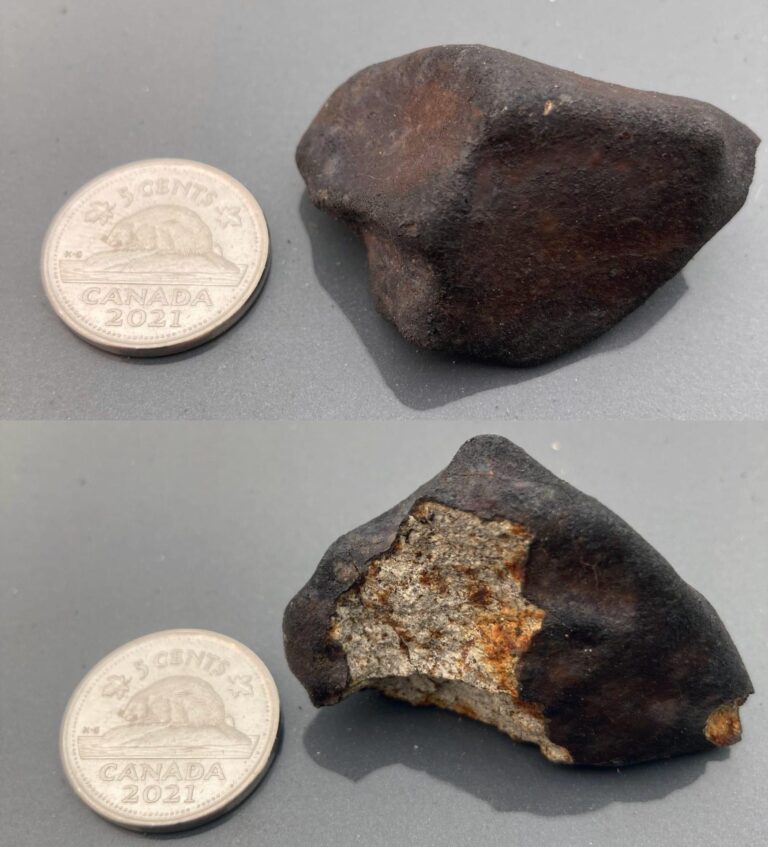A spectacular celestial event unfolded over Japan as a bright meteorite streaked across the night sky, captivating onlookers and prompting widespread social media attention. The breathtaking flash, captured on camera by numerous witnesses, offers a rare glimpse of a meteorite entering Earth’s atmosphere with dazzling intensity. This remarkable occurrence has sparked interest among astronomers and skywatchers alike, showcasing the dynamic and unpredictable nature of our cosmic surroundings.
Watch Stunning Meteorite Blaze Across Japanese Sky Captured in Rare Footage
In a rare celestial event, residents across Japan witnessed a spectacular meteorite blazing vividly against the night sky. The luminous trail, captured on multiple cameras, lit up cities and rural areas alike, creating a moment of awe and wonder for stargazers and casual observers. The meteorite’s fiery descent lasted just seconds, but its brilliant glow lingered long enough to spark widespread social media sharing and discussions among astronomy enthusiasts.
Experts quickly analyzed the footage, confirming the object as a meteoroid entering Earth’s atmosphere at high speed, before fragmenting and burning up due to friction. Here’s a quick breakdown of the meteorite’s key characteristics:
- Estimated Diameter: 0.5 – 1 meter
- Velocity: Approximately 45 km/s
- Color: Brilliant greenish-blue flare
- Duration: Roughly 7 seconds of visibility
| Parameter | Value |
|---|---|
| Time Observed | 21:14 JST |
| Location | Kyushu & Honshu Regions |
| Brightness | Magnitude -3 (visible from urban centers) |
Experts Explain Science Behind Meteorite’s Bright Trail and Impact Risk
The meteorite’s spectacular luminous trail results from intense friction as it hurtles through Earth’s atmosphere at high speeds, causing the surrounding air to superheat and ionize. This process, known as ablation, incinerates much of the space rock’s surface, producing the brilliant streaks visible across the night sky. Experts emphasize that variations in the meteorite’s composition and angle of entry largely influence the brightness and duration of these stunning light displays.
When assessing the impact risk posed by meteorites, scientists consider several key factors, including size, velocity, and trajectory. Although the majority burn up harmlessly before reaching the ground, larger fragments can survive atmospheric entry and pose localized threats. Below is a quick overview of criteria used to evaluate potential hazards:
| Factor | Impact on Risk |
|---|---|
| Size | Larger meteorites have greater kinetic energy on impact |
| Speed | Higher velocity increases destructive potential |
| Composition | Metallic meteorites are more likely to reach the ground intact |
| Entry Angle | Shallow angles prolong atmospheric travel, often causing break-up |
How to Safely Witness Meteor Showers and Report Unusual Sky Phenomena in Your Area
Observing meteor showers is a breathtaking experience, but it’s essential to prioritize safety to fully enjoy the spectacle without risk. Ensure you find an open, dark area away from city lights for optimal viewing, and bring essentials like warm clothing, a reclining chair, and a flashlight with a red filter to preserve night vision. Always inform someone of your whereabouts if you plan to watch in remote locations. Avoid looking directly at bright screens, which can hinder night vision, and give your eyes at least 20 minutes to adjust to the darkness before the meteors begin.
If you witness any unusual sky phenomena such as unexpected flashes, strange shapes, or colors not typical of meteorites, it’s crucial to document and report the event responsibly. Take clear photos or videos if possible, noting the exact time, location, and direction of the sighting. You can report unusual events to local astronomy clubs or national space agencies. Below is a quick guide to what information will prove most helpful when submitting reports:
| Details to Capture | Description |
|---|---|
| Time and Date | Exact moment when the phenomenon occurred |
| Location | Where you observed the event |
| Visual Description | Colors, shapes, movement patterns of the object |
| Supporting Media | Photos or videos if available |
` tag. Here is the corrected HTML with the closing tag added:
“`html
Observing meteor showers is a breathtaking experience, but it’s essential to prioritize safety to fully enjoy the spectacle without risk. Ensure you find an open, dark area away from city lights for optimal viewing, and bring essentials like warm clothing, a reclining chair, and a flashlight with a red filter to preserve night vision. Always inform someone of your whereabouts if you plan to watch in remote locations. Avoid looking directly at bright screens, which can hinder night vision, and give your eyes at least 20 minutes to adjust to the darkness before the meteors begin.
If you witness any unusual sky phenomena such as unexpected flashes, strange shapes, or colors not typical of meteorites, it’s crucial to document and report the event responsibly. Take clear photos or videos if possible, noting the exact time, location, and direction of the sighting. You can report unusual events to local astronomy clubs or national space agencies. Below is a quick guide to what information will prove most helpful when submitting reports:
| Details to Capture | Description |
|---|---|
| Time and Date | Exact moment when the phenomenon occurred |
| Location | Where you observed the event |
| Visual Description | Colors, shapes, movement patterns of the object |
| Supporting Media | Closing Remarks
The breathtaking meteorite sighting over Japan serves as a powerful reminder of the dynamic and ever-changing nature of our night sky. As experts continue to study the event, residents and skywatchers alike are encouraged to remain vigilant for future celestial phenomena. This remarkable blaze across the heavens not only captivated onlookers but also provided valuable data for scientists tracking space objects that intersect with Earth’s atmosphere. |




